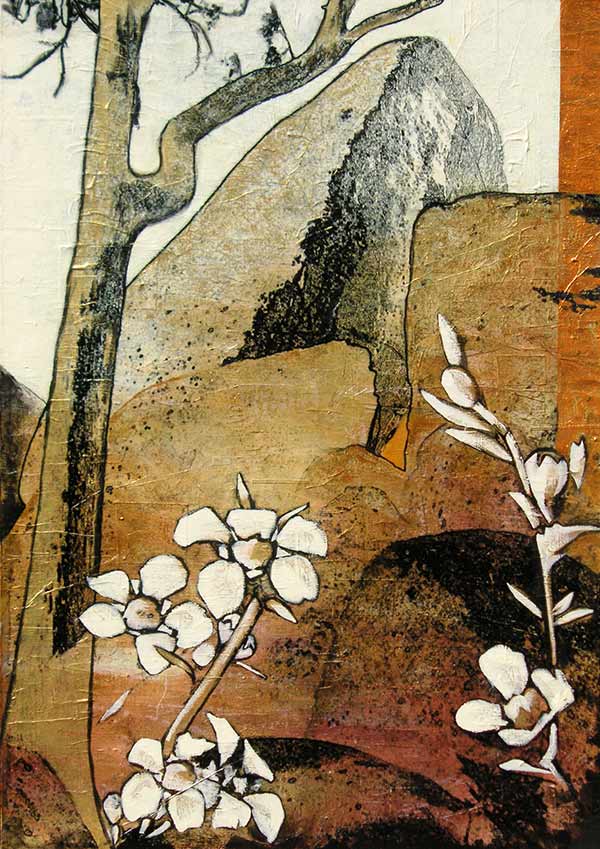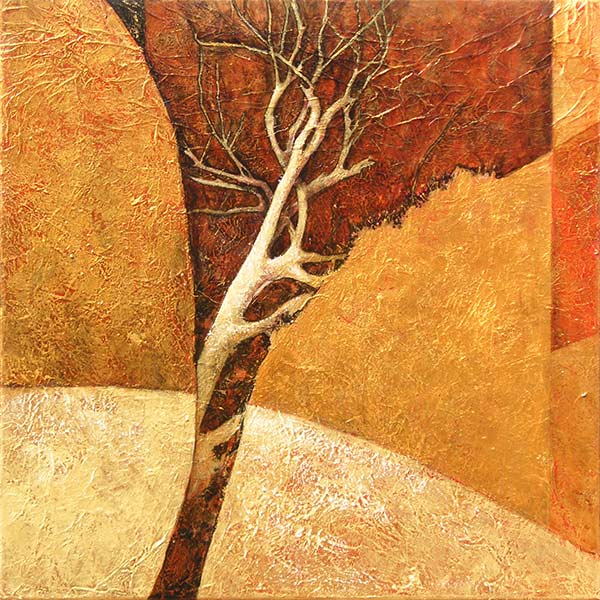Subtotal: $
Checkout-

The Sadness of the Creatures
-

Meeting the Wolf
-

Saskatchewan, Promised Land
-

The Plants Can Talk
-

Saving the Soil, Saving the Farm
-

The Wonder of Moths
-

The Leper of Abercuawg
-

Dandelions: An Apology
-

A Wilderness God
-

Why I Hunt
-

Reading the Book of Nature
-

Breakwater
-

Lambing Season
-

Earthworks Urban Farm
-

Are You a Tree?
-

Practicing Christianity
-

Who Gets to Tell the Story?
-

A Medievalist Looks for the Image of Christ
-

In Defense of Chastity
-

Poem: “Let Them Grow”
-

Poem: “Squall”
-

Readers Respond
-

GEDs for Myanmar Migrants
-

Inside Nyansa Classical Community
-

Watching the Geminids
-

A World Full of Signs
-

Covering the Cover: The Riddle of Nature
-

Back from Walden Pond
-

Can Masculinity Be Good?
-

Nature Is Obsessed with Me

Ancient Songs in the Desert
For Ephrem the Syrian, nature shows us truths about the Creator.
By Tessa Carman
April 26, 2024
The poet was nearing his seventieth year when famine came to the ancient city of Edessa in Mesopotamia. The storehouses were full of hoarded grain; too few were trusted enough to fairly measure out the harvest. The poet went to the storehouse managers and asked for leave to distribute their supplies to the poor. “You are a man of God,” they assented. So, he sectioned off stretches of streets to lay out three hundred beds. He tended to the sick and buried the dead.
The following year was one of plenty, and the poet went back to his monastic cell and his solitary prayers. A short while later, in the year AD 374, he died.
Meanwhile, across the waters in Alexandria, Egypt, the famed defender of the doctrine of Christ’s incarnation, Athanasius the Great, also fell asleep in the Lord.
The poet was the deacon and theologian Ephrem of Syria. Like Athanasius, Ephrem fought a war of words against heresies and for the faith of the church: his chosen weapons were songs and symbols. He wrote thousands of hymns in Syriac, the dialect of Aramaic then spoken throughout northern Mesopotamia. Years before, he took refuge in Edessa with other Christians escaping persecution after the Byzantine emperor Jovian surrendered Ephrem’s hometown of Nisibis to the Sassanid Empire.
Ephrem has been less read than other fourth-century Church Fathers like Augustine and Athanasius, partly because outside the Christian Near East, there’s been more focus on teaching and translating classical Latin and Greek than classical Syriac. But his work has been undergoing a quiet renaissance, especially since the pioneering work of Sebastian Brock in Syriac studies in the last decades of the twentieth century.

Karyn Fendley, Rocks, Tree 2, acrylic paint and mixed media on canvas, 2007. karynfendley.com. Used by Permission.
What is perhaps most significant about Ephrem is that he does theology in his poetry: that is, his goal is to reveal some of the “hidden” things of God through symbols in his poems. For him, writes Brock in his introduction to Ephrem’s Hymns on Paradise, “a symbol actually participates in some sense with the spiritual reality it symbolizes.” Every part of creation can be a symbol of God – and of Christ, in particular and especially – to the eye of faith.
Ephrem’s symbolism is distinct, then, from the kind of symbolism where the concrete points to the abstract. Ephrem recognizes that a concrete thing – a tree, a pearl, oil – is itself, yet also participates in Christ, its Lord. A pearl is a pearl, for example, but also symbolizes – that is, unveils reality about – Christ. Not only is its existence and nature held together by the One who is Being himself, but also its nature communicates truths about its creator.
Ephrem’s use of symbols may feel unfamiliar to modern readers. Indeed, the word he uses for “symbol,” raza, “indicates the connection between two different modes of reality” – and it is also the term used to refer to the Divine Liturgy. Ephrem notes that, though we cannot directly know God’s essence, we are given two keys to knowing him: scripture and the book of nature:
In his book Moses described
the creation of the natural world,
so that both Nature and Scripture
might bear witness to the Creator:
Nature, through man’s use of it,
Scripture, through his reading it;
they are the witnesses
which reach everywhere,
they are to be found at all times,
present at every hour,
confuting the unbeliever
who defames the Creator.
(Hymns on Paradise, no. 5)
The green world shows us a truth about its creator, for the green world is his creation. In The Discarded Image, C. S. Lewis describes how the medieval, or premodern, man saw in earth and heaven a plenitude of being: planets as well as plants bore their own spirit and personalities, and the world was a living mystery. Creation was not equivalent with God, but participated in his being. Hans Boersma, in Heavenly Participation, a study of this current in Christian thought, writes that this world picture “regarded the created order as sacramental in character. The patristic and medieval mind recognized that the heavenly reality of the Word of God constituted an eternal mystery; the observable appearances of creation pointed to and participated in this mystery.”
The modern conception of the universe feels cold and lonely by comparison. Not only God but all spirits have been abandoned: animals and plants have become material to be molded for man’s comfort. Man, dominant over all the natural world, stands alone, having lost communion with all creatures.
With the inner eye of faith – with spiritual vision – we can read the symbols in the book of nature. But sin has blinded us; thorns keep us from the right path, and even from seeing rightly. Ephrem writes:
The sprouting of the thorn [Gen. 3:18]
testified to the novel sprouting of wrong actions,
for thorns did not sprout
as long as wrongdoing had not yet burst forth;
but once there had peered out
hidden wrong choices made by free will,
then the visible thorns began to peer out from the earth.
(Hymns against Heresy, no. 28)
Ever since the “sprouting of the thorn,” we’ve struggled to see the image, to see creation for the real symbol that it is. Alexander Schmemann puts it like this: “the world itself must, in the first place, be known, viewed and experienced as the ‘symbol’ of God, as the epiphany of his holiness, power and glory.” Christ came “to save the world by restoring it as the ‘symbol’ of God.”
For Ephrem, just as sin and death severed our relationship with God and his creation, recovering a right relationship with God means recovering also a right relationship with our fellow creatures: with other human beings, and also with animals, trees, land, water, and the rest of God’s creation.
Christ restores creation to how it was always supposed to be: in the New Jerusalem, there will be no separation between the “natural” and “supernatural.” Creation will be as it ought to have been: a means for communion with our Creator and Lord. Sacraments are a foretaste of the new creation; as Schmemann writes in Of Water and the Spirit: “The holy water in Baptism, the bread and wine in the Eucharist, stand for, i.e. represent the whole of creation, but creation as it will be at the end, when it will be consummated in God, when He will fill all things with Himself.” Hans Boersma puts it this way: “The purpose of all matter ... is to lead us into God’s heavenly presence, to bring about communion with God, participation in the divine life. Thus, are the church’s sacraments simply the beginning of the cosmic restoration. The entire cosmos is meant to serve as a sacrament: a material gift from God in and through which we enter into the joy of his heavenly presence.”

Karyn Fendley, Monolith, acrylic paint and mixed media on canvas, 2007. karynfendley.com. Used by Permission.
When saints befriend lions, spiders, ravens, or trees, notes Ephrem, they prefigure the restoration of the harmony between creatures in the eschatological paradise. This was completely counter to Manichaeism, a contemporary religious movement that viewed the material world as evil in itself. For Ephrem the world is, as Gerard Manley Hopkins would express much later, “charged with the grandeur of God”: it is one of the primary ways we can truly understand what God is like.
And like here is key. We understand God through symbols and images that are never exact nor sufficient: an infinite God cannot be fully defined by our own finite intellects. And yet, though we cannot comprehend the entire ocean, we can see the waves lapping at the shore, and have some idea of its awe-inspiring expanse. Names through which we can know God are still just names, insufficient and imperfect as those who use them. But language nevertheless becomes the “clothing” by which we identify and comprehend truths about God, Ephrem notes:
Do not let your intellect
be disturbed by mere names,
for Paradise has simply clothed itself
in terms that are akin to you.”
(Hymns on Paradise, no. 11)
While God has revealed himself most fully in Christ, he remains hidden, mysterious. Ephrem asks, if we cannot even understand ourselves, how dare we try to comprehend the depths of God, the ground of our being? In one hymn, he addresses Christ thus:
Though your nature is one, its expressions are many;
they find three levels, high, middle, and lowly.
Make me worthy of the lowly part,
of picking up crumbs from the table of your wisdom.
Your highest expression is hidden with your Father.
Your middle riches are the wonder of the Watchers.
A tiny stream from your teaching, Lord,
for us below makes a flood of interpretations.
(Hymns on the Faith, no. 10, Murray trans.)
And indeed, in Ephrem’s poetry there is a veritable flood of interpretations, a cascade of symbols: one rich example is his description of the River Jordan, the Virgin Mary, and Sheol all as “wombs” where Christ resided and emerged from at different times.
“He clothed Himself in language, / so that He might clothe us” is one example of the recurrent analogical refrains in Ephrem’s poetry: God, or God the Son, did this, so that this could be so. He “died and came to life again, so that He might give life and resurrection to all” (Nisibene Hymns, no. 36). He entered Mary’s womb, and hence the physical world:
The Mighty One entered, and put on insecurity
from within her womb; the Provisioner of all entered
—and experienced hunger…
…naked and stripped
there came forth from her He who clothes everything!
(Hymns on the Nativity, no. 11).
In Hymns on the Resurrection, no. 1, the last stanza consists of a flourish of paradoxes:
Whom have we, Lord, like You—
the Great One who became small, the Wakeful who slept,
the Pure One who was baptized, the Living One who died,
the King who bore disgrace to ensure honor for all!
For Ephrem, then, the meaning of a symbol is inherent, not invested or imposed, and the poet or theologian discovers that meaning. In this way the whole world is sacramental, and the great truth is that Christ is the fulfillment of the sacrament of creation.
When one is baptized into Christ, it is not a “supernatural” life that one gains, as Alexander Schmemann noted, but true life. The coming of Christ recovers creation as his symbol, and by dying upon a tree, he gives us another chance to eat of the Tree of Life: Christ himself. A tree is a symbol, and it is real.
There’s no such thing as a “mere” sign or “mere” symbol for Ephrem. Creation is real because it is symbolic – because it participates in God’s being. And it is eucharistic because it is offered to us as a gift, and as a way to participate in the presence of God. As Ephrem writes in his Hymns on the Unleavened Bread, no. 3, Christ is “the Lord of symbols / who fulfilled every symbol at His resurrection.”
So Ephrem asks for Christ to open our eyes, the eyes of faith, which we’ve blinded by our own sin:
for even though we all have a pair of eyes each,
few are those who have perceived that gift…
Have mercy, Lord, on the blind, for all they can see is gold!
(Hymns on the Fast, no. 6)
Ephrem knew that to serve the hungry during the famine in Edessa was to serve Christ, and to participate in his Lord’s work: “Inasmuch as you did it to one of the least of these My brethren, you did it to Me.” When our eyes are opened, we see Christ as the King who says, “I was hungry and you gave Me food; I was thirsty and you gave Me drink.”
Max Weber famously described a central feature of modernity as “disenchantment”: we see the material world not as evil, but as emptied of meaning. Perhaps what Ephrem can teach us is that disenchantment is itself a kind of enchantment, a curse, a spell we’re awaiting a saintly poet to break, and reveal to us the Lord of Symbols, Jesus Christ. With opened eyes, we can see our need not only for God but for his world, and for the complex web of creation that constitutes it. We can see that, as Ephrem writes in his Letter to Hypatius, “our need for everything binds us with a love for everything.”
If, in our own time, symbols and reality are conceived not as two dimensions of a unified whole but as separate elements of a fractured universe, then restoration is needed, a re-membering as well as a remembering. The incarnation – Christ taking on flesh, robing himself in matter – is what heals the division.
Already a subscriber? Sign in
Try 3 months of unlimited access. Start your FREE TRIAL today. Cancel anytime.









































N Haug
A wonderful insight into a great man of God